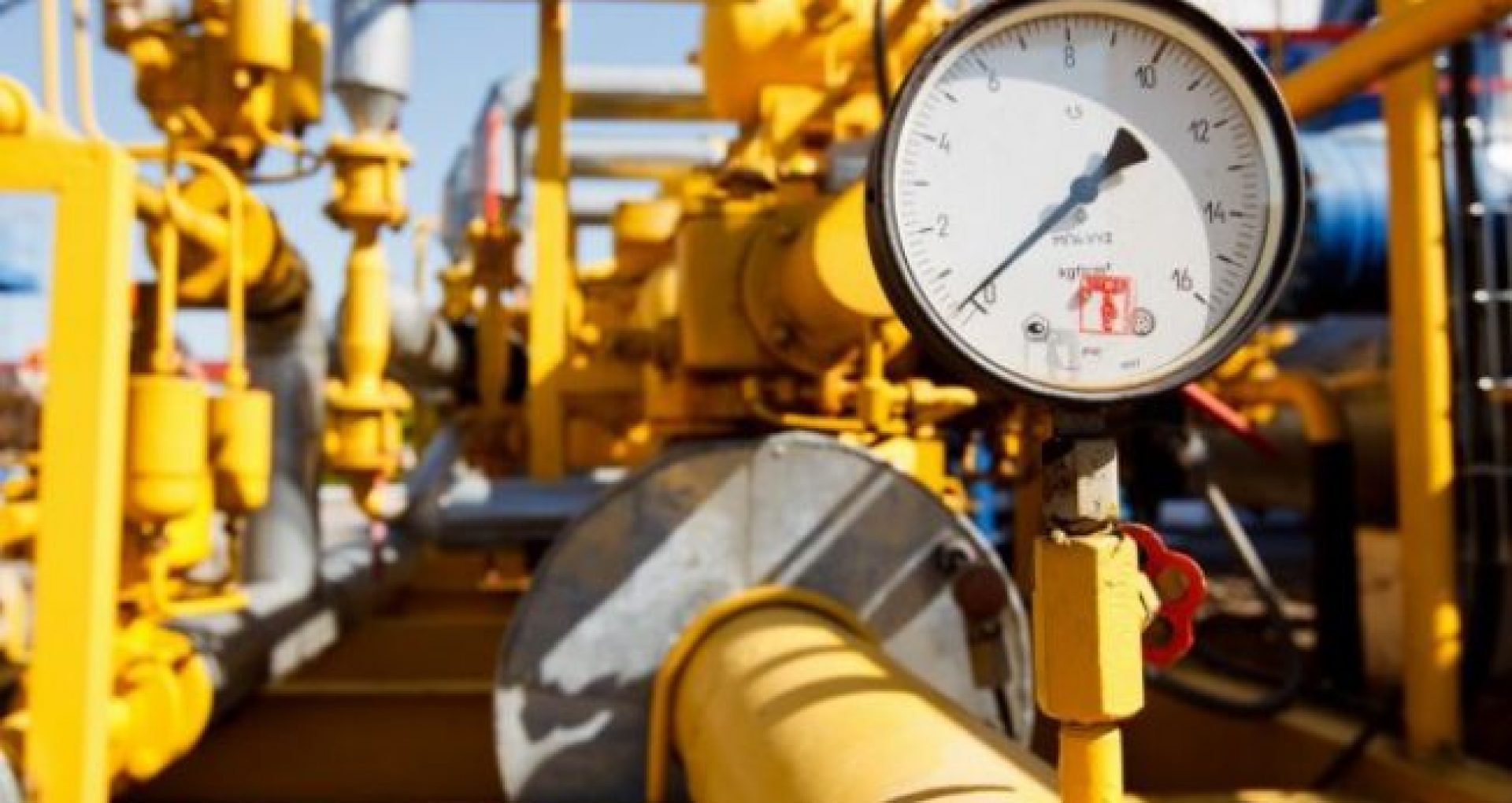EXPERT: Gas crisis – the Situation Is Serious, Critical, but Manageable

The gas crisis we are facing is a problem not only for Moldova but for the entire region. Often, in such situations, the perception is worse than the real situation. The public pressure on politicians is enormous, and politicians should take the right steps to avoid mistakes.
Veaceslav Ioniță, the economic policy expert at the Institute for Development and Social Initiatives Viitorul, analyzed the situation in the TV show “Economic analysis with Veaceslav Ioniță”. The expert states that “the situation is serious, critical, but manageable. It’s a difficult, but not an impossible task.”
Ioniță states that Moldova’s solutions regarding gas prices are mostly political and not economic. In his opinion, the gas crisis will last a maximum of two years, after which the critical condition will temper.
According to the economist, this is not the first time that Moldova goes through a crisis situation related to the cost of gas. If negotiations with the Russian Federation do not lead to obtaining a fair price in the new gas supply contract this year, we could pay about 790 USD per 1,000 cubic meters compared to 250 USD, the average amount according to the old formula. “This is an unpleasant and difficult situation, but it is manageable and we have to show intelligence,” the economist says, noting that Moldova had a relatively comfortable gas price until 2005-2006 when we paid almost $80 per 1,000 cubic meters. In 2010, the price increased to $250. The historical price peak was in 2013-2014 when it reached $380. In the years 2016-2017, there was a reduction in prices. In 2018, however, Gazprom changed its approach, and Moldova began to pay more for gas. Due to the favorable international situation, in 2020, Moldovans had the lowest gas price in the last 15 years. Against the backdrop of the global energy crisis, associated with the pandemic, prices fell, and Moldova paid $150 per 1,000 cubic meters of gas.
“We are required to pay $790 instead of $250 per 1,000 cubic meters, and with no guaranteed delivery contract.”
“We were happy and thought the gas price of $150 will be the same for the rest of our lives. It is incorrect to analyze the current situation comparing it with what we had last year when we faced the anomaly related to COVID-19. In 2021, the situation is reversed. We have bad speculation in the stock market. At the same time, a separate investigation should be carried out, we need to know how we ended up with a new calculation formula and, instead of $250 per 1,000 cubic meters, we are required to pay $790, and with no guaranteed delivery contract,” the economic analyst noted.
The expert also stated that in the “bad” years from the energy point of view, Moldova paid for the import of energy resources $1,200 billion. In 2020, we paid less than $ 600 million, the lowest cost in 15 years. This year, if negotiations with the Russian Federation fail, the price will reach $1, 240 billion. Next year, the situation could worsen. It will reach $1, 450 billion. Then, inevitably, the situation will normalize.
Mulțumim că citești ZdG!
Ajută-ne să continuăm să furnizăm informații esențiale — donează pentru jurnalismul nostru.
According to Veaceslav Ioniță, from 1997 to 2014, Moldova allocated for the import of energy resources amounts equivalent to about 20% of the Gross Domestic Product (GDP). Since 2001, as GDP has risen, so have energy prices. In 2020, Moldova’s energy burden has reached a record low, below 5% of GDP. This year, the economist claims, if negotiations with the Russian Federation fail, the energy burden will double and amount to 9.5% of GDP. Next year, if negotiations are not successful again, the energy burden will increase to 10.5% of GDP and will reach the level we had until 2015.
“For Moldova, energy resources were critical until 2010-2015. We were very poor and resources were very expensive. The year 1997, when we had to give 20% of GDP for energy resources, meant the bankruptcy of the country “.
“It is one thing to pay 4,90 lei, with an average monthly salary of 7,500 lei, and quite another thing when you pay 7 lei with an average monthly salary of 3,000 lei.”
According to the expert, today Moldova can no longer be blackmailed in the energy sector. The energy burden is incomparably lower than 10-15 years ago. Rising prices are unpleasant for the population, but it is possible to cope with the situation. The pressure of energy prices on the economy, on the population, and on the state budget is four times lower than 15-20 years ago.
The economist claims that in the years 2000-2003, the tariff per cubic meter of gas in Moldova was 1,3 lei. The maximum tariff of 7,20 lei was reached in 2014. Subsequently, due to the favorable international situation, the price decreased to 4,90 lei. This year, household consumers could pay 9 lei per cubic meter of gas. But, according to the economist, it is one thing when you pay 4,90 lei with an average monthly salary of 7,500 lei and quite a different thing when you pay 7 lei with an average monthly salary of 3,000 lei.
Veaceslav Ioniță notes that, until 2015, a Moldovan with an average salary could buy up to 540 cubic meters of gas. In 2020, due to the fact that the salary increased and the gas became cheaper, the citizen could buy 1520 cubic meters. If the price per 1,000 cubic meters increases to 900 lei, in the first quarter of next year Moldovans will be able to purchase about 900 cubic meters with an average monthly salary. It is much less than in 2020, but it is almost twice as much as before 2015.
A solution – the Energy Package III
According to the economic analyst, Moldova urgently needs to implement the Energy Package III, voted in 2012, but not yet implemented, which should provide for the creation of the Commodity Exchange, as in Romania, where any consumer can buy gas. Veaceslav Ioniță announced that this week, the manager of the Romanian Commodity Exchange will arrive in Moldova to help the leaders from Chișinău to speed up the opening of this Exchange for gas trading. At the same time, he announced that Bucharest will also help with gas suppliers. According to the economist, the opening of the Commodity Exchange does not necessarily mean that we will have gas at a lower price, but it will help us to deal with the negotiations with the Russian Federation.
At the same time, the Energy Package III implies the creation of gas transmission networks, as well as the creation of distribution networks. He recalled that most of the local distribution networks were built with the money of the state as well as the money of local public administration, businesses, and the population. Billions of lei have been invested in the gas infrastructure that Moldovagaz currently uses.
The economic analysis suggests that the state should support citizens in times of crisis. If we increase the gas tariff to 9 lei, the Government should subsidize half of the increase for the consumption of up to 100 cubic meters of gas. If now the tariff is 4.90 lei and it will increase up to 9 lei, they should offer a subsidy of 2 lei or 2,5 lei.
In order to pay these subsidies, the Government will have to identify about 600 million lei. However, Ioniță adds, when gas becomes more expensive, VAT revenues in the state budget will also increase. Thus, the money that the state will earn from the increase of VAT revenues, from the increase of the gas tariff, can be returned to the population, so as not to pay more expensively than in 2014-2015. Thus, the total annual amount that people will receive in the form of subsidies will amount to 1900 lei.
In the opinion of the expert, the price increases should be done gradually. The first one should be done no earlier than December and by no more than 80%. The second price increase should be applied only after we get out of winter so that citizens can pay their winter bills in the summer when consumption is low.
Source: viitorul.org



